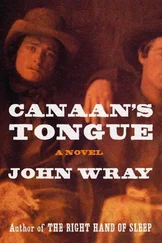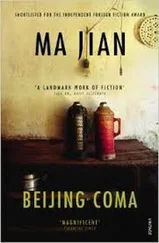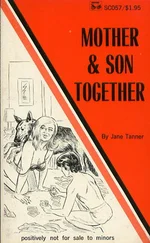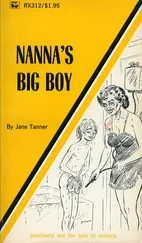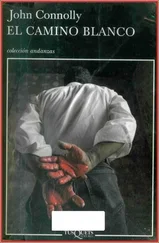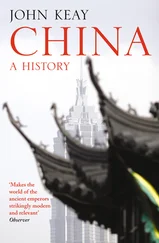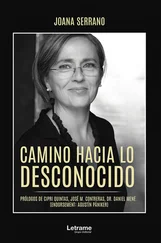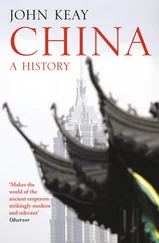Because of the similarities in class, the transition from the white world into the colored world was, Toomer is arguing, a seamless one, in spite of the fact that, he would have us believe, he had effectively been “white” in New York and now was “black” in Washington. It is important to emphasize that Toomer is postulating an almost mythic class and racial formation, a “people, whose racial strains were mixed and for the most part unknown, and who happened to find themselves in the colored group,” who have, alas, disappeared (“those days are gone now”). He writes here of a racially and culturally distinct group within the “colored group,” “an aristocracy…midway between the white and Negro worlds,” 54which enjoyed considerable economic privilege, a class of which he and his family were always a part. Toomer’s depiction of this class-within-a-class, as it were, a point of mediation between black and white, is another component in his rhetorical strategy of declaring racial independence as a member of the vanguard of a raceless tertium quid .
In Washington, Toomer most certainly lived among the Negro elite, but it was disingenuous of him to suggest that its members were racially or culturally indeterminate; they were legally defined as Negroes, whether they liked it or not. And this would have been especially the case at the turn of the century following the Plessy v. Ferguson Supreme Court ruling of 1896, which declared “separate but equal” as the law of the land, the ruling itself a desperate attempt to police the boundaries that interracial sexual liaisons had hopelessly blurred. Toomer never tells us, if we but pause to think about it, why his family, living effortlessly as “white” in New York, found itself sending its child to an all-black school in Washington. Surely, no white family would have done that out of choice. But Toomer does this to establish the experiential justification for his subsequent decision to define himself as an “American.”
Toomer assures us that he identified implicitly with this new way of life, and certainly his earlier life on Bacon Street had prepared him for it: “They were my kind, as much as children of my early Washington years had been.” 55Toomer emphasizes their social, racial, and cultural uniqueness: “These youths had their round of activity, parties, interests — and were self-sufficient. In their world they were not called colored by each other. They seldom or never came in contact with members of the white group in any way that would make them racially self-conscious.” 56Occupying this liminal world of a mulatto elite, Toomer is arguing, it is not difficult to understand how he could define himself as “neither white nor black.” 57
And yet it is also difficult to understand how Toomer could even suggest that within this period of American racial history that any white American at the time would label him as anything other than black. Anticipating the curiosity, confusion, and misunderstanding that his body, speech, and appearance would engender, and no doubt seeking to escape the boundaries imposed upon persons of African descent, Toomer tells us he formed his own “racial position” before leaving what he would have us believe was a “special” race world of Washington, D.C., to attend college in 1914. If so, he became one of the earliest proponents of the theory that “race” was socially constructed, even if his motives for doing so were quite mixed. Moreover, he would spend the rest of his life, following the publication of Cane , socially constructing his racial indeterminacy, and simultaneously deconstructing his Negro ancestry.
“By hearsay,” writes Toomer, echoing W. E. B. Du Bois’s famous description, in The Souls of Black Folk , of his own ancestry, “there were in my heredity the following strains: Scotch, Welsh, German, English, French, Dutch, Spanish, with some dark blood. [Let us] assume the dark blood was Negro — or let’s be generous and assume that it was both Negro and Indian. I personally can readily assume this because I cannot feel with certain of my countrymen that all of the others are all right but that Negro is not. Blood is blood…. My body is my body, with an already given and definite racial composition.” 58After identifying the various racial “strains” in his ethnic heredity, Toomer raises the vital question of genetic ancestry, of race: “Of what race am I? To this question there can be but one true answer — I am of the human race….” Rejecting the one-drop rule (one drop of Negro blood doth forever a Negro make) as well as the reigning preoccupation with racial purity that governed conceptions of race in the United States at the beginning of the twentieth century, Toomer claimed a social identity that would inevitably place him at odds with the American mainstream and, in retrospect, make him a pioneering theorist of hybridity, perhaps the first in the African American tradition. Nevertheless, he remained indifferent to the consequences of this position, and quite determined to maintain and justify it, returning to the subject seemingly endlessly in his autobiographical writings. Adopting an unorthodox, progressive, and certainly idealistic position on race that would be the source of some suffering even now in the twenty-first century, he defined himself as an “American, neither black nor white, rejecting these divisions, accepting all people as people.” 59
Toomer’s “racial position” anticipates by eleven years a complementary theory of race conceptualized by the Mexican writer and political leader Jose Vasconcelos in La raza cosmica ( The Cosmic Race ), published in 1925. In this treatise, Vasconcelos defines the Mexican people as a new race composed of all the races of the world. The central claim of La raza cosmica is that “the various races of the earth tend to intermix at a gradually increasing pace, and eventually will give rise to a new human type, composed of selections from each of the races already in existence.” 60According to Vasconcelos, the “new human type” or alternately “the fifth universal race,” the “synthetic race,” “the definitive race,” or the “cosmic race” has its origins in the pre-Mayan legendary civilization of Atlantis. 61
In prose that is marked by a mixture of philosophy, poetry, and mysticism, Vasconcelos asserts that this new cosmic race will be “made up of the genius and the blood of all peoples and, for that reason, more capable of true brotherhood and of a truly universal vision.” 62It will emerge from the continent of South America, thus fulfilling, according to Vasconcelos, the historic destiny of Latin American people or the “Hispanic race” to bring the races of the world to an advanced state of spiritual development. 63Based in the “Amazon region,” Vasconcelos calls the capital of this new empire of the spirit “Universopolis,” which will rise on the banks of the Amazon River. 64One of the “fundamental dogmas of the fifth race” is love as it is expressed within the framework of Christianity which, according to Vasconcelos, “frees and engenders life, because it contains universal, not national, revelation.” 65Writing as an idealist and a visionary, Vasconcelos argues that we “have all the races and all the aptitudes. The only thing lacking is for true love to organize and set in march the law of History.” 66Love, then, is the expanding floor upon which will rise “a new race fashioned out of the treasures of all the previous ones: The final race, the cosmic race.” 67
While there is no concrete evidence that Toomer was familiar with the writings of Vasconcelos, there are many affinities between their respective views on race. 68But it is quite possible that Toomer knew Vasconcelos’s work, given its wide popularity and given Toomer’s sojourns in New Mexico. Toomer and Vasconcelos emerge as prophets of a new order in which the mixed-race person is a pivotal figure, a metaphor or harbinger of a hybrid culture and a fusion of many ethnic and genetic strands. The claims of both are based upon an appeal to the universal, the positive values associated with hybridity and thus a rejection of racial purity, and the belief that racial mixture or mestizaje possesses the potential to unify humankind. For Toomer and Vasconcelos, the mixed-race person or the mulatto emerges as a symbol of “cosmic” possibility, and the spiritual resolution of all human conflict rather than as a symbol of human conflict and degeneracy. Gilberto Freye would develop a related theory of “racial democracy” as a hallmark of Brazilian culture in his classic work, Casa-Grande e Senzaca , 69published in 1933. Ferdinand Ortiz would elaborate a similar theory for Cuban culture a few years later in his book, Contrapunteo cubano del tabaco y el azúcar, published in 1940. 70Vasconcelos’s theory (either directly, or through Toomer) influenced Zora Neale Hurston as well. In “How It Feels to Be Colored Me,” Hurston writes, “At certain times, I am no race, I am me …. The cosmic Zora emerges.” 71
Читать дальше



